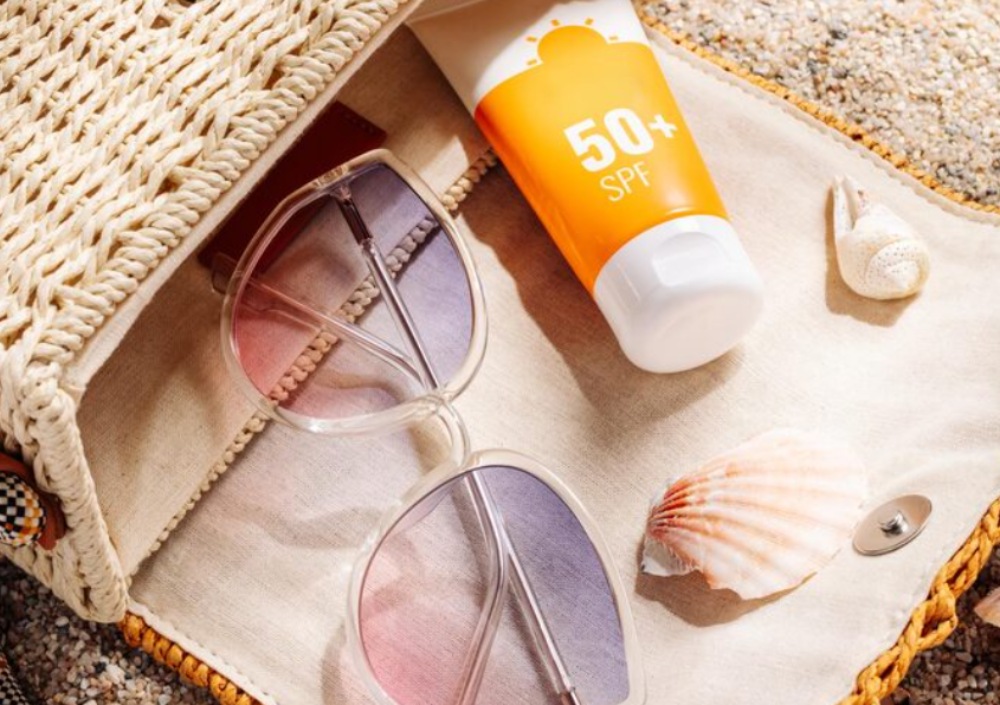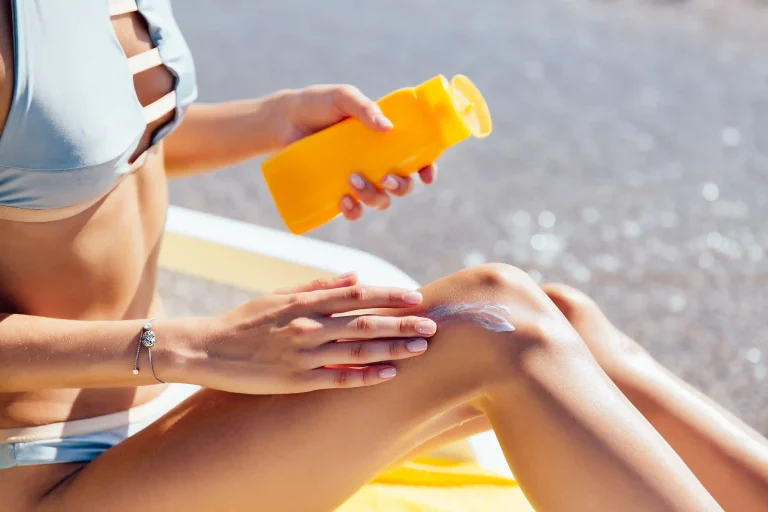Mineral sunscreens are liked by lots of people for their safety and good protection against bad sun rays, but many folks avoid them because of the sticky, pale layer they sometimes leave. This annoying issue, called white cast, often troubles those with darker skin colors the most. Luckily, new ideas in small particle tech, especially with titanium dioxide (TiO₂), have made these items much nicer to put on and harder to see on the skin. If you want to know how companies cut back on white cast in nano TiO₂ mixes, this article will explain the science and smart ways behind it.

What Causes White Cast on Skin?
Older sunscreen mixes relied a lot on uncoated or badly blended non-nano titanium dioxide. These larger pieces tended to clump up in creams or lotions, which caused uneven spreading and clear streaks on the skin.
On top of that, without the right surface changes or mixing steps, these minerals just sat on the skin instead of blending in. As a result, they made a thick layer that bounced light all over, creating that ghostly appearance.
When sunlight hits your skin after you apply sunscreen with big TiO₂ bits, those chunks scatter both UV rays (which is helpful) and visible light (which leads to white cast). How much scattering happens depends on the particle size compared to the light’s length: bigger bits scatter more everyday light.
Nano titanium dioxide changes this action. Being much smaller—between 10-40 nm—it scatters way less visible light, but it still does a great job at blocking harmful UV rays.
Key properties of nano titanium dioxide suitable for use in sunscreens
Nano titanium dioxide combines several useful traits: it stops UV rays pretty well, stays safe and gentle on the skin, and mixes easily into both oily and watery recipes. It can take in, bounce back, or turn away UVB light and a bit of UVA. Plus, it allows regular light to go through without much trouble, so it does not change your skin color or fight with makeup shades.
These small pieces are also very steady. With various coatings that suit for different formula system, the product feels soft, smooth, and gives a fresh, glowing finish on the skin. That is why nano TiO₂ often appears in daily things like BB creams or colored lotions.
What Are Titanium Dioxide Nano Materials?
Titanium dioxide nano materials are very small pieces of TiO₂, made carefully to be only 10 to 40 nanometers big. These tiny bits are a popular choice for sunscreens because they block UV rays quite well and reduce that chalky, light look that older mineral filters usually caused.
For example, BFP-T10AHL is in the 10-20 nm range and has a coating of Aluminum Hydroxide and Lauric acid, it works nicely in oil-based blends. Since they are so little, these particles are almost invisible on the skin, but they still give strong UVB protection with some UVA help too.

How Titanium Dioxide Nano Materials Reduce White Cast
Switching from regular TiO₂ to very tiny nano versions gets right to the problem of white cast by altering how these bits handle UV rays and normal light.
Particle Size and Light Scattering Behavior
Smaller sizes cause less bouncing of visible light. Take BFP-T20SD, for instance, with a size range of 20-40 nm; it hits a good balance between being nearly unseen on the skin and offering strong sun protection.
These little bits form a neat, even layer on your skin without sending extra light back to the eye. That is why many newer sunscreens feel so light, yet they provide high SPF levels without leaving whitish marks.
Surface Coatings and Their Role in Transparency
Special coatings improve clarity even more by changing how TiO₂ blends with other parts of the product. BFP-T20SD, treated with silica and dimethicone, pushes away water, allowing it to mix well into oil-based mixtures while avoiding lumps from wetness.
Coatings like alumina or stearic acid also help the particles spread out evenly in creams, so each use goes on smoothly without odd spots or lines.
Dispersion Techniques for Uniform Application
Even the best materials need good mixing to work well in the final item. That is where dispersive liquids are useful—especially pre-mixed slurries designed for easy use in making formulas.
Products like BFP-TDO01 use nano titanium dioxide as the main part, mixed into oil with advanced grinding methods. These slurries prevent powder from floating around, and they stay stable over time while performing great as sunscreen on the skin.
Whether you need oily or watery bases depends on your product’s type, but having both options gives plenty of room during making.
Innovations in Titanium Dioxide Nano Sunscreen Formulations
Today’s sunscreen mixes do not just aim to cut white cast—they also try to better the overall feel, lasting power, moisture, and even add extra skin care benefits.
Use of Emulsifiers and Film-Forming Agents
To keep nano TiO₂ spread evenly on your face all day (even if you sweat), makers add film-forming helpers that hold the active stuff to your skin without clogging pores or feeling heavy.
Paired with blending agents that suit either water-in-oil or oil-in-water setups based on the product’s goal, these aids create soft textures that dry clear and stay in place under makeup or during outside activities.
Incorporating Antioxidants and Skin Soothers
Often, makers pair nano TiO₂ with skin-friendly extras like vitamin E or natural plant bits to fight harmful free particles from UV light. This combined action not only protects better but also calms redness—a big help for people with sensitive skin who get annoyed by the sun.
Synergistic Effects with Other UV Filters
Nano titanium dioxide works nicely with organic shields like Diethylamino Hydroxybenzoyl Hexyl Benzoate (DHHB) or Ethylhexyl Triazone (EHT), combining physical blocking with chemical taking in for broader protection across the spectrum.
It boosts UVA defense when matched with BFP-SP DHHB, providing stronger safety while letting makers use less of each part—lowering the risk of irritation and improving comfort.

For those looking for a reliable supplier of modern UV protection parts, Shanghai BFP New Material Co., Ltd. is a good choice. They are an experienced maker of anti-aging ingredients for sun care and beauty products, running GMP-certified factories across China. Their range includes many items like nano titanium dioxide powders, dispersive liquids, and organic UV filters, offering customer answers to formulators worldwide. If you have questions, feel free to reach out through their contact page.
FAQ
Q1: What makes titanium dioxide nano materials different from regular titanium dioxide?
A: Nano kinds are much smaller (usually 10–40 nm), which reduces visible light bouncing—the main cause of white cast—while still offering great UV protection.
Q2: Are these nano materials safe for daily use?
A: Yes. They are safe, gentle stuff that blocks UV rays well without going into live skin layers.
Q3: Can I use these materials in both water-based and oil-based formulas?
A: For sure. Choices like hydrophilic slurries (like BFP-TDW) work for watery mixes, while oily ones (like BFP-TDO02) fit oil-heavy bases.
Q4: Do these materials mess with makeup?
A: Not at all. With their tiny size and coatings like dimethicone or stearic acid, they leave a smooth base that works fine under foundation without clumping or causing strange flashes in photos.
Q5: Where can I find good-quality titanium dioxide nano ingredients?
A: Check out trusted options from Shanghai BFP, which offers various kinds for beauty items, including ready-to-use dispersive slurries.
You Might Like:
Does Titanium Dioxide Sunscreen Leave a White Cast? How to Avoid It
Discover BFP’s Nano Titanium Dioxide: The Complete Mineral UV Filter Solution You Need




